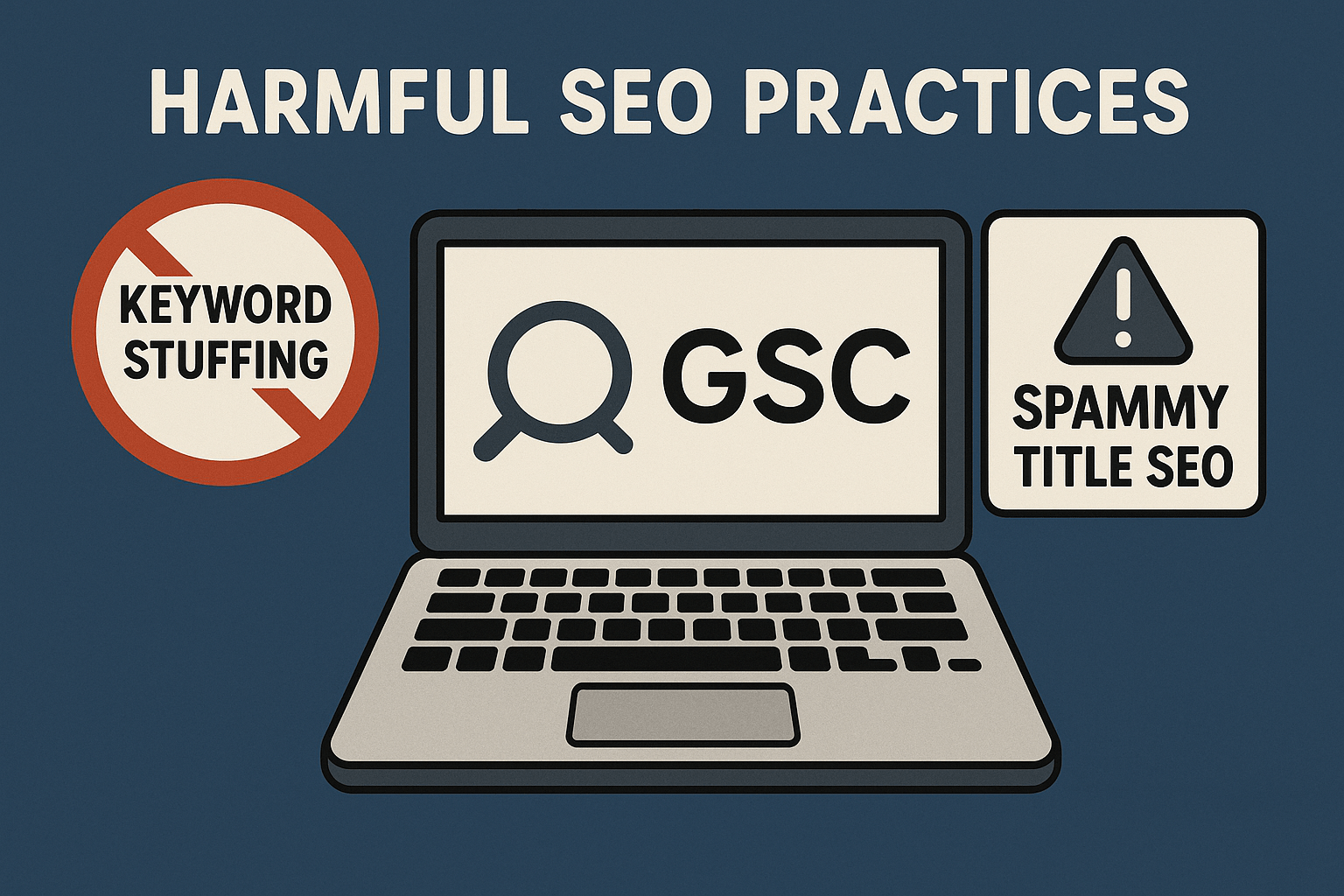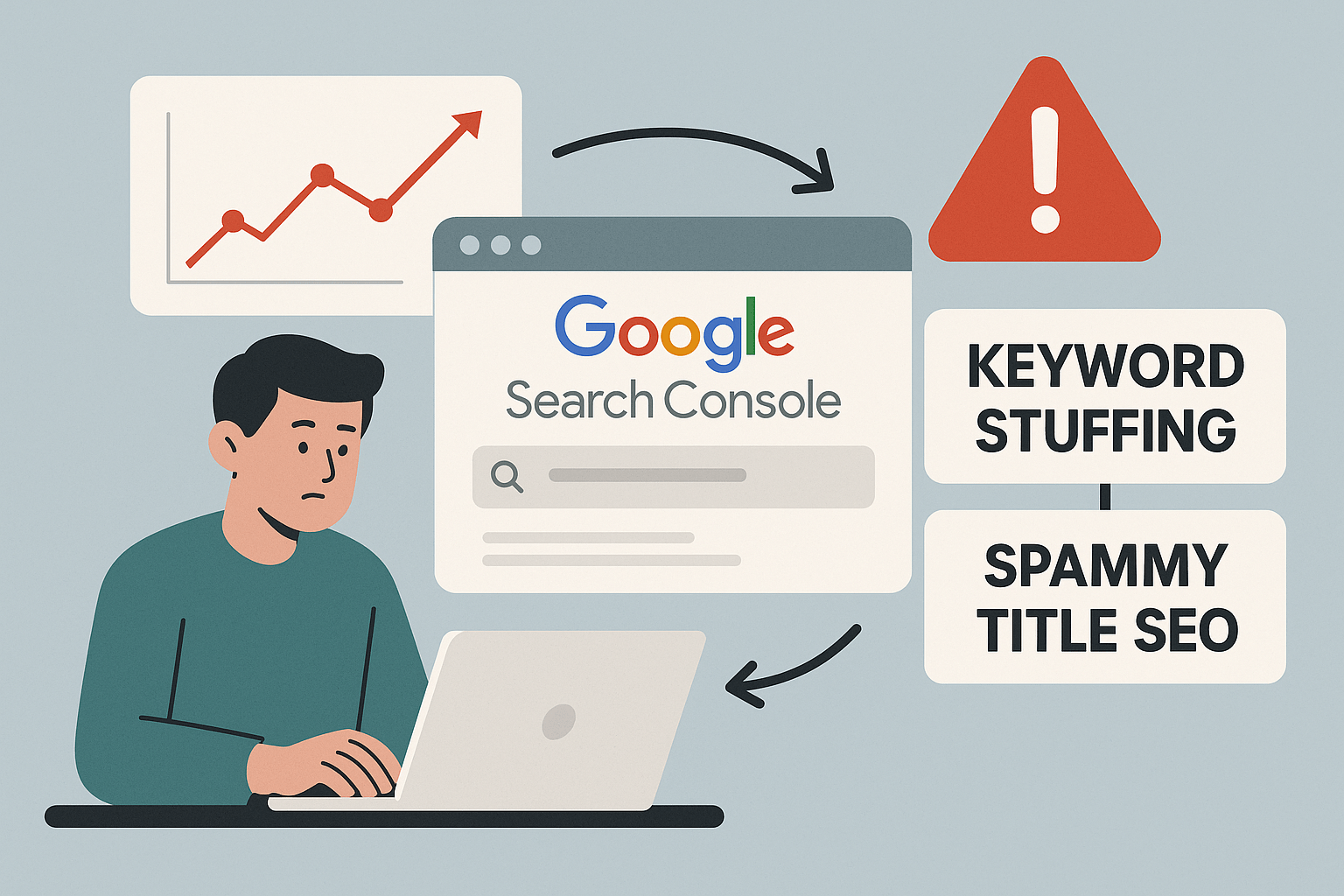When it comes to optimizing your website for search engines, Google Search Console (GSC) is an invaluable tool. However, many website owners and SEO practitioners unknowingly engage in harmful practices like keyword stuffing and spammy title SEO, which can lead to penalties and poor rankings.
In this guide, we’ll explore safe AEPS (Aadhaar Enabled Payment System) Google Search Console practices, focusing on how to avoid keyword stuffing and craft non-spammy SEO titles that comply with Google’s guidelines. Whether you’re a beginner or an experienced marketer, these best practices will help you optimize your site effectively—without risking penalties.
What Is Keyword Stuffing and Why Should You Avoid It?
Keyword stuffing is the practice of overloading a webpage with excessive keywords in an unnatural way to manipulate search rankings. This outdated tactic may have worked in the early days of SEO, but today, Google’s algorithms are sophisticated enough to detect and penalize it.
Examples of Keyword Stuffing
-
Repetitive phrases: “Best AEPS service, AEPS provider, AEPS banking, AEPS transaction, AEPS agent…”
-
Hidden text: Adding white text on a white background stuffed with keywords.
-
Unnatural placements: Forcing keywords where they don’t fit naturally.
Google’s Webmaster Guidelines explicitly discourage keyword stuffing, as it creates a poor user experience. Instead, focus on natural, high-quality content that answers user queries.

How to Optimize AEPS Content Without Keyword Stuffing
1. Use Keywords Naturally
Instead of repeating the same phrase, use variations and synonyms. For example:
-
Target Keyword: “AEPS Google Search Console optimization”
-
Variations: “How to optimize AEPS for Google Search Console,” “Best AEPS SEO practices for GSC”
2. Follow the “1-2% Keyword Density” Rule
While exact density isn’t a strict ranking factor, keeping your keyword usage between 1-2% ensures natural integration. Tools like Yoast SEO or SurferSEO can help monitor this.
3. Prioritize User Intent
Google’s BERT and RankBrain algorithms prioritize content that matches user intent. Ask yourself:
-
Is this helpful for readers?
-
Does it answer their questions clearly?
-
Is the keyword placement organic?
4. Optimize Meta Titles Without Spam
A common mistake is creating clickbaity or spammy titles like:
❌ “AEPS SEO 2024 – Shocking Tricks Google HATES!”
Instead, craft clear, concise, and relevant titles:
✅ “AEPS Google Search Console Best Practices for 2024”
Best Practices for SEO Titles:
-
Keep under 60 characters to avoid truncation.
-
Place the main keyword near the beginning.
-
Avoid ALL CAPS or excessive symbols (!!!, ???).
Google Search Console (GSC) Tips for AEPS Websites
Since AEPS (Aadhaar Enabled Payment System) is a niche topic, proper GSC optimization is crucial. Here’s how to use Google Search Console effectively:
1. Monitor Keyword Performance
-
Check “Performance Reports” to see which AEPS-related queries drive traffic.
-
Identify high-impression, low-click terms and optimize those pages.
2. Fix Indexing Issues
-
Use the “Coverage Report” to find and fix crawl errors.
-
Submit an updated sitemap for better indexing.
3. Avoid Manual Penalties
-
If Google flags your site for “unnatural links” or “thin content”, take immediate action.
-
Use the “Manual Actions” report in GSC to check for penalties.

Case Study: How a Financial Site Recovered from Keyword Stuffing
A fintech blog targeting “AEPS agent registration” was hit with a Google ranking drop due to excessive keyword repetition. After auditing, they:
✅ Reduced keyword density from 4.5% to 1.2%.
✅ Rewrote meta titles to be more descriptive.
✅ Added FAQ sections for better user engagement.
Result: Rankings improved by 43% in 3 months, and organic traffic increased.
Frequently Asked Questions (FAQs)
1. What is the ideal keyword density for AEPS content?
Aim for 1-2%. Overstuffing can trigger penalties, while too little may weaken relevance.
2. Can I use my focus keyword multiple times in a post?
Yes, but naturally. Include it in:
-
Title
-
First paragraph
-
Subheadings
-
Meta description
-
Image alt text
3. How do I know if my title is spammy?
Ask:
-
Does it sound like clickbait?
-
Is it misleading?
-
Would a real user find it helpful?
If unsure, check Google’s Title Guidelines.
4. Does Google Search Console penalize for keyword stuffing?
Indirectly, yes. While GSC doesn’t issue penalties, Google’s algorithms can downgrade rankings for over-optimization.
Final Thoughts: Safe AEPS SEO in 2024
Keyword stuffing and spammy titles are relics of old SEO tactics. Today, Google rewards high-quality, user-first content. By following AEPS Google Search Console best practices, you can improve rankings without risking penalties.
Key Takeaways:
✔ Use keywords naturally and strategically.
✔ Craft clear, non-spammy titles.
✔ Monitor GSC reports for SEO insights.
✔ Focus on user intent, not just algorithms.
By sticking to these principles, your AEPS-related content will rank better, attract more traffic, and—most importantly—provide real value to users.
Disclaimer
This post is for educational purposes only. If you have any concerns regarding content ownership or DMCA-related issues, please refer to our DMCA policy page for guidance on post removal. Always verify information before implementation.
